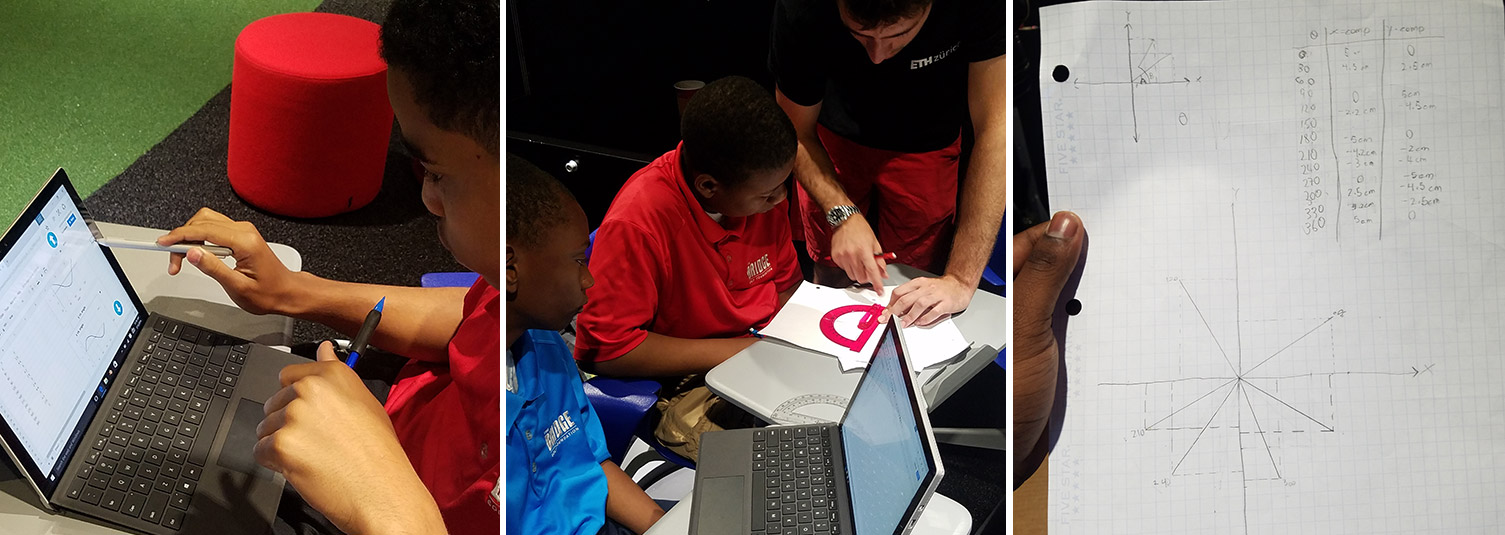
By Veeshan Narinesingh, STEM program leader
Trigonometry is essential for describing many things that happen every day in the world around us, from the flight of a golf ball to the light emanating from the sun.
The young men in our summer program are getting way ahead of the curve by beginning to build an understanding of trigonometry, something not usually seen until sophomore or junior years in high school.
Our introduction started with 5-cm lines and x,y coordinate axes. Starting from the origin (or middle) of the axes, the students drew horizontal lines at an angle of 0 degrees. They then measured the line in the x and y directions. (In this case, the x length was 5 and the y was 0.)
Next they changed the angle of their 5-cm line from 0 to 30 degrees, again measuring how long the line extended on both the x and y axes. Students did this in increments of 30 degrees all the way up to 360. They noted that lines that went to the left had negative x values, and lines that went down had negative y values.
Then students plotted their graphs of x and y lengths. Antonio said it best when he said his y graph looked like a wave. What they were plotting were the traditional sine and cosine graphs. Essentially, they were making vectors and then decomposing them into their horizontal and vertical components.
How could we apply this math to golf? If you know the overall speed of a ball off the club and the launch angle, you can determine the ball’s initial vertical speed as it goes up as well as its initial horizontal speed as it travels out and closer to the pin.
With this information, you can plot the shot’s height (y axis) and distance (x axis). It’s trigonometric calculations like these that allow our TrackMan simulators to be so precise.